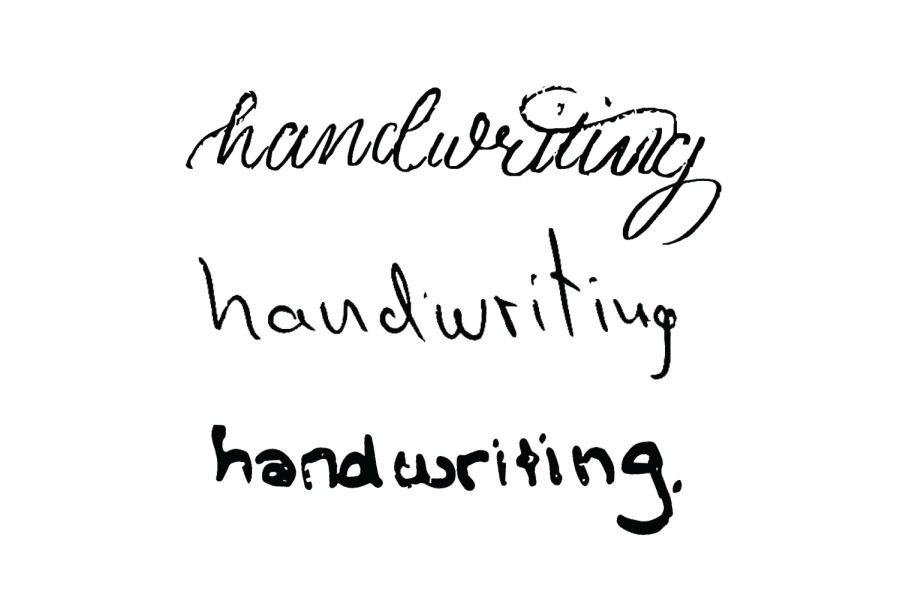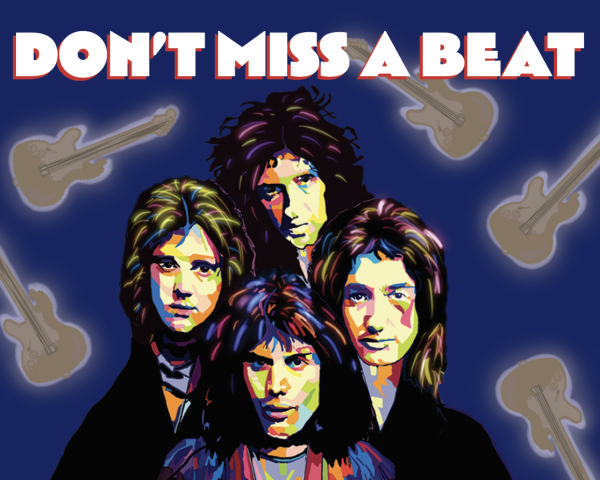This is My Handwriting
Examining the little-discussed mark of our identities
A person’s handwriting is like their fingerprint—a unique mark of who they are. While it’s true that our bone structure, first language and other childhood factors play a large role in shaping our handwriting. However, handwriting differs from the fingerprint in one respect: it can be changed. By taking a closer look at those changes, handwriting can tell us a lot about the person behind it, even what they do.
“Ever since I started bullet journaling…I’ve made an effort to make [my handwriting] look neat,” sophomore Maya Dakua said. Bullet journalists like Dakua—those who practice reflecting, scheduling and generally organizing their lives in a physical journal—often use calligraphy to title their pages or create headers.

Legibility also matters for English teacher Keith Tocci, who tries to be more aware of his handwriting while interacting with students. “My board handwriting is pretty consistent and pretty legible,” he said. “When you go to school for teaching, there are actually classes that teach you how to write on a board.”
But for some, writing neatly wasn’t always easy. “Back in 3rd grade, my class was practicing writing signatures and…my dad kept complaining about how my handwriting wasn’t legible,” sophomore Amara Reynolds said. “Eventually we worked on improving my handwriting, while school was teaching me how to write in cursive.
Over the years, her cursive from school and writing from home blended together. Junior Joy Ji, who is ambidextrous, named a similar influence on her right-hand handwriting by her mom. “I learned everything from holding a pen to writing words from her,” Ji said. “[So] I sometimes do see that some of my strokes are similar to hers.”

Spanish teacher Pilar Badillo, who grew up in Spain, broke away from the standard she was taught. “A lot of Europeans use cursive,” Badillo said. “When you’re in kindergarten, you have these notebooks and you just trace over whatever is written there. And then usually what happens is in 6th grade you say, ‘I don’t want to do that anymore, because it takes too long and it’s too hard. I like this better.’ That’s when I started to use my [current] handwriting, which is disconnected letters.”

“The problem is that my handwriting changes day to day,” Dakua said. “Sometimes it’s messy and sometimes it isn’t. It depends on how I hold the pencil, how soft or hard the pencil lead is, the speed I’m writing it in or my mood.” At the end of the day, the changes in your handwriting reflect the changes in your life. Perhaps that’s what makes your handwriting, yours.
Print Issue
Please click on the three vertical dots on the top right-hand corner, then select “Two page view.”

2020-2021 - Staff Writer
2021-2022 - Digital Design Editor
2022-2023 - Creative Advisor
I joined C-Mag because of our amazing page designs and...

2021-2022 - Staff Writer
2022-2023 - Managing Editor
I joined C Mag because I love that journalism helps shine a light on issues that need addressing...







